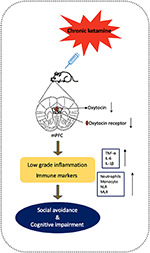
In addition, callosal projections in the somatosensory cortex can be disrupted by unilateral transection of ION, and this disruption is permanent in adult brain, showing that early sensory input is also critical for the formation of inter-hemispheric connection in the cortex. Our previous finding has shown that callosal axons of layer II/III pyramidal neurons in the somatosensory cortex cross the midline region and then find correct target areas in the opposite hemisphere to establish callosal connections during the early postnatal days, and this process depends on spontaneous neuronal activity. Sensory experience also affects dendritic protrusions and local circuitry suggesting possible implication in the process of learning and memory. In addition, plasticity of cortical neurons are also changed after sensory deprivation, for example layer IV neurons rapidly diminishes synaptic plasticity after sensory deprivation. Moreover, somatosensory experience re-organizes the cortical plasticity both during perinatal development and adulthood. For example, sensory deprivation before postnatal day 4 (P4), either by lesioning elements of the afferent pathway or by ablating, plucking, or trimming the whiskers, can disrupt the formation of the barrels and alter the physiological properties of neurons in the barrel cortex. This unique topography largely benefits from developmental fine-tuning elicited by sensory inputs from the whiskers. The cytoarchitectonic units in layer IV, “barrels”, correspond one-to-one with the arrangement of whiskers on the contralateral snout in both morphology and function. The rodent barrel cortex has proved to be a convenient model system for investigating neural plasticity in the cerebral cortex. Thus, early sensory deprivation does result in behavioral alterations in mice, some of which may be associated with the disruption of oxytocin signaling. In addition, the social memory deficit was associated with reduced oxytocin (OXT) levels in the hypothalamus and could be partially restored by intranasal administration of OXT. Although ION-transected mice had normal locomotor activity, motor coordination, olfaction, anxiety-like behaviors, novel object memory, preference for social novelty and sociability, they presented deficits in social memory and spatial memory compared with control mice.

In this study, we investigated the behavioral phenotypes in adult mice with unilateral transection of the infraorbital nerve (ION) at postnatal day 3 (P3). Although deprivation of orofacial sensory input at perinatal stages disrupts the establishment of the barrel cortex and relevant callosal connections, its long-term effect on adult behavior remains elusive. Early-life sensory input plays a crucial role in brain development.


 0 kommentar(er)
0 kommentar(er)
